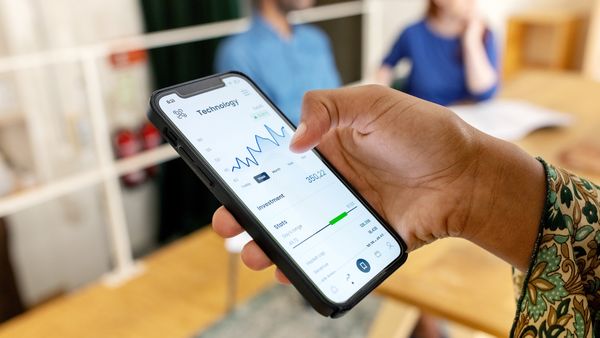Is your 401(k) best of breed or a dud? It's a good question. Seventy-million Americans have about $7 trillion invested in this type of employer-sponsored retirement plan. The problem? There's really no place for regular investors to go these days to see how their 401(k) compares to other plans.
There's no star-rating system for 401(k)s like Morningstar's fund-rating system. And there's certainly nothing like IBD's Composite Rating that shows the strength of a stock vs. the rest of the market.
So, it's harder to figure out how your 401(k) stacks up on things like the size of your employer's matching contribution, the quality of investment choices, the fees it charges and other plan perks.
Measure With No BrightScope
A few years ago, retail investors could get a 401(k) rating from BrightScope that let them know how their plan stacked up vs. a top-rated plan. But the company, which was acquired by another financial services data provider in 2016 and is now an ISS Market Intelligence business, no longer offers this service.
"So, yeah, for the consumer looking to do this type of fact searching, it's harder," said Christine Benz, director of personal finance and retirement planning at Morningstar.
Size Up Your Best 401(k)
So that leaves 401(k) sleuthing and analysis up to do-it-yourselfers. But where do you start? And what specific 401(k) traits should you be looking at to see if your plan is competitive? What you want to do is get a sense of how your 401(k) stacks up vs. industry averages when it comes to employer matches, fees, investment choices, and enrollment benefits like auto enrollment and automatic annual (savings) increases.
Roll up your sleeves, rev up your PC and do your own 401(k) checkup to see how your 401(k) stacks up, advises Benz.
Check For 401(k) Company Match
The amount of money your company contributes to your 401(k) is more than a perk. It is a key part of your overall compensation package, says Brian Walsh, head of advice and financial planning at SoFi. And this extra cash is key to building up a nest egg over the long haul.
Employers typically express "matches" as a percentage of your overall pay. The average match for Vanguard 401(k) plans, for example, is 4.5% of pay, and the median match (meaning half are higher and half are lower) is 4%, according to the fund company's How America Saves 2023 report. The most common match formulas, according to T. Rowe Price, are 50% up to 6% of pay, and 100% up to 4% of salary.
Bigger plans, however, are more likely to offer a match than smaller ones. In 2022, 93% of plans with assets over $2 billion offered a match, vs. just 40% of plans with less than $2 million, according to T. Rowe Price.
Max Your Best 401(k) Match
Benz says finding out the amount of your company match is easy. "You shouldn't have to hunt through any technical statement," such as the plan's summary plan description (SPD) or annual report (Form 5500), said Benz. You'll find the match amount on your company website, or your 401(k)-information packet sent to you during the annual benefits enrollment period.
During the pandemic, many companies did away with matches. So, the first thing to do is to check to see if your employer is still chipping into your 401(k). And, if they are, whether the match is in-line with industry averages.
"Obviously, the bottom line when it comes to employer matches is the more the merrier," said Mark Hamrick, senior economic analyst at Bankrate.
Watch For Tiny Matches
Hamrick says to be wary of a matchless 401(k) or one that comes with a skimpy match.
"A lack of a match would be detrimental for accomplishing one's retirement savings goals," said Hamrick. "To me, it would be a red flag if one is receiving at less-than-competitive match."
Ok, so what do you do if your match is skimpier than the competition? Don't just blow off your 401(k). You should at least invest a big enough chunk of your salary to get whatever company match your employer offers.
"To fail to take advantage of whatever match you're offered is leaving money on the table," said Hamrick.
If your match is skimpy, or your overall plan is subpar, you can consider investing any other dollars for retirement elsewhere, such as an IRA, experts say.
Weigh Investment Choices
A 401(k), which helps savers build a big enough nest egg to ensure a secure retirement, is only as good as the investments it offers. Investment options must provide you with the necessary portfolio building blocks and diversification to help you fund and support your retirement at all stages of your life, says Benz.
Investment options in large company 401(k) plans can range from four to 100 choices, according to a BrightScope/ICI report. But the average plan offers 28 options, including 13 stock funds, three bond funds and nine target-date funds, which adjust the mix of stocks and bonds based on how far away a saver is from retirement.
Use Index Funds In The Best 401(k)
Must-have funds in a 401(k), Benz says, include low-cost index funds that track indexes like the large-cap S&P 500 or total stock market index fund that offer broad diversification. "These funds will give you a lot of U.S. market exposure in a single shot," said Benz. Your 401(k) should also include international stock funds. Your retirement portfolio must also include core fixed-income options, such as a total bond market fund or a fund that tracks a broad index like the Bloomberg Aggregate Bond Index.
Most competitive 401(k)s now offer so-called target date funds. "These are absolutely terrific options for people just getting their plans off the ground or people further along in their careers who don't want to actively manage their retirement portfolios," said Benz.
It's also a good sign if your 401(k) has a cash-like account such as a money market fund that can be used as a cash preservation option. "As people get closer to retirement, they should have some liquid assets set aside," said Benz.
The Best 401(k) Accounts Keep Costs Down
Walsh says a good 401(k) also should include a menu of low-cost index funds that help you minimize investment costs. The quality of the investments in your 401(k) lineup is also important. By quality, we're talking about funds with low expense ratios compared to their peers, consistent returns over short- and long-term time periods, as well as those that garner high risk-reward ratings.
A quality 401(k) plan also has additional features that make the plan more attractive, such as automatic escalation of savings and the ability to invest in retirement savings options, such as a Roth IRA, which are funded with after-tax contributions and come with tax-free withdrawals.
Consider Vesting Periods
Every penny of your own money you contribute to a 401(k) is yours the second it hits your account. However, when it comes to company matching contributions, companies have different vesting schedules. In short, vesting is how long you will need to work at the company before you have full rights to any company matching funds.
The best 401(k)s are those that offer immediate vesting, meaning "the money is yours (if you started the job two weeks or three months ago) and you can take it with you if you leave the company tomorrow," said Benz. However, two of 10 (18%) of Vanguard company plans require employees to stay at the company at least one year to be eligible for matching contributions.
That means in some plans you might have to wait a set amount of time before the matching funds money are officially yours. So, if you're a serial job switcher you might lose dollars your company contributes to your retirement account if you regularly jump from job to job.
"Access to these matching funds is important," said Hamrick. "And the sooner that the (money is) I n your possession, the better."
Mind The 401(k) Fees
The lower fees you pay the more of your money that can be put to work in investments and boost your odds of a successful retirement savings outcome.
There are two types of fees. Investment fees, such as mutual fund expense ratios, which are easy to find out about via basic fund documents, fund websites, as well as fund trackers like Morningstar. Many index funds have rock-bottom expense ratios below 0.05%, while actively managed funds run by stock pickers can run above 1%. Benz says ideally you should look for an active fund with an expense ratio under 50 basis points.
"Your ultimate goal is finding the most cost-effective fund to meet your goals," said Walsh.
Look At All Fees
The other fees, which are harder to decipher, are administrative fees, which include things like charges for record keeping, legal and accounting fees, administration, and trustee charges. "The best place to find those would be in the annual plan disclosure," said Walsh.
If research is not your thing, Beagle, a subscription-based investment firm, will calculate plan fees for you.
In 2020, for example, the average total 401(k) plan cost was 0.83% of plan assets according to the BrightScope/ICI report.










